Cedar Key is a beautiful, coastal town in Florida that’s a paradise for bird enthusiasts. The small island paradise is abundant in natural beauty and unique ecosystems, making it the perfect breeding and nesting site for many bird species.
Birds in Cedar Key are a fascinating sight to behold, given their vibrant colors, unique calls, and the diversity of species found in this part of Florida. This is the reason why Cedar Key is popular among bird lovers, nature enthusiasts, and ornithologists.
With over 250 species of birds calling Cedar Key home, it’s not a surprise that many tourists flock here every year to enjoy the spectacular bird-captivating scenery and learn more about the resident and migratory bird species.
This article highlights some of the most common bird species found in Cedar Key, their habitats, and what sets them apart from other bird species.
1. Bald Eagle
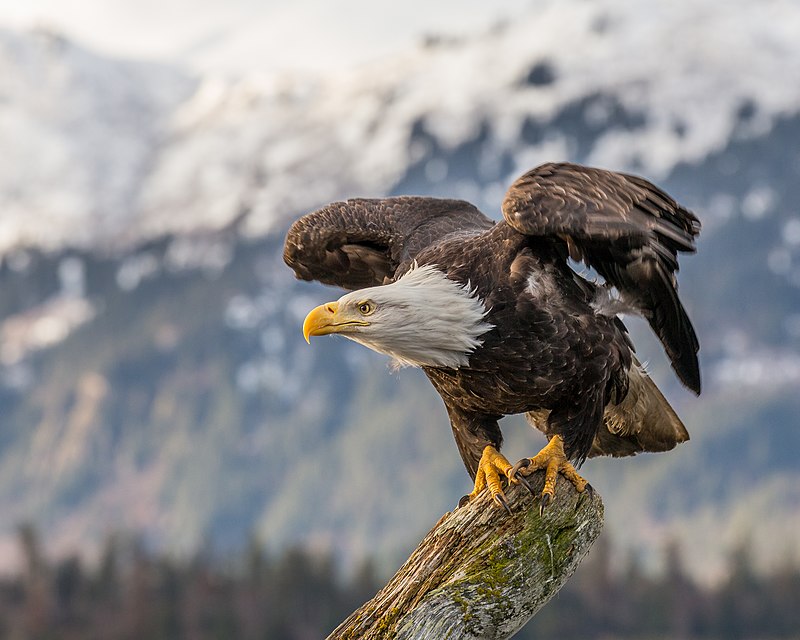
The majestic Bald Eagle is a bird of prey found in North America and recognized as the national symbol of the United States.
With its distinctive white head, brown body and striking yellow beak, this sea eagle has two known subspecies that form a species pair with the White-tailed Eagle.
It inhabits much of Canada, Alaska all states in the US contiguous area and Northern Mexico near large bodies of water where they feed mainly on fish.
These birds have an impressive wingspan ranging from 1.8 to 2 meters depending on their size making them one of nature’s most magnificent creatures.Scientific classification:
| Kingdom | Animalia |
| Phylum | Chordata |
| Class | Aves |
| Order | Accipitriformes |
| Family | Accipitridae |
| Genus | Haliaeetus |
| Species | H. leucocephalus |
Also Featured In: Most Common United States Birds, Birds You’ll Find in Zoo
2. Peregrine Falcon
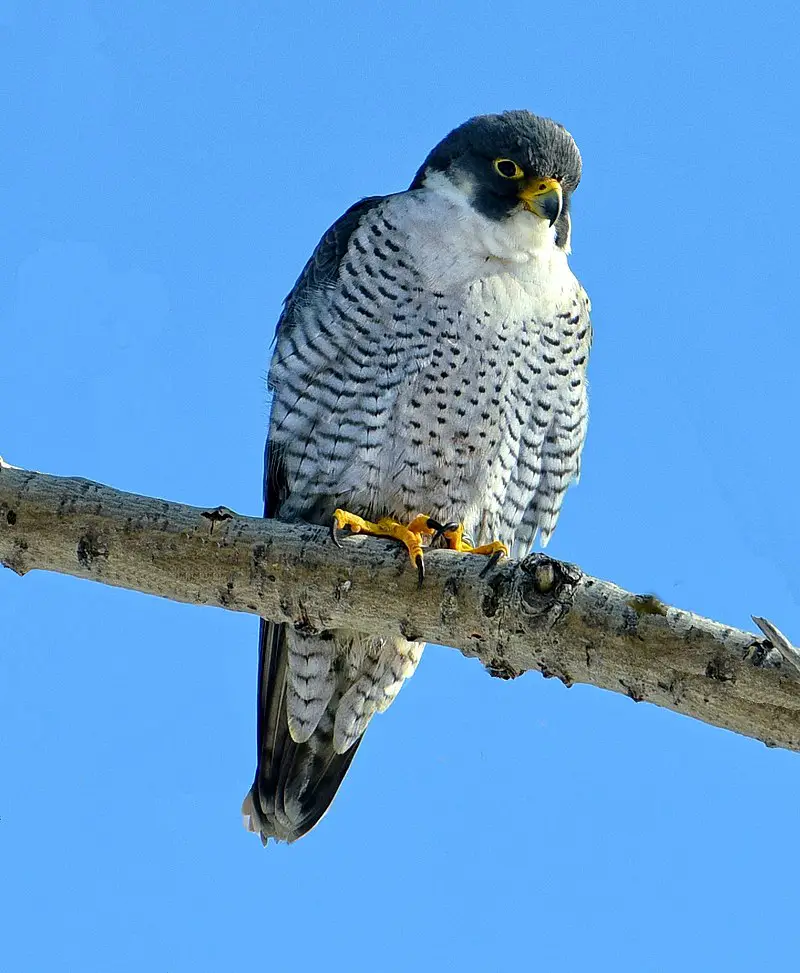
The Peregrine Falcon is a majestic bird of prey belonging to the family Falconidae. It has a blue-grey back, barred white underparts and black head making it easily recognizable.
This intelligent raptor is known for its incredible speed reaching over 320 km/h (200 mph) during hunting dives – one of the fastest animals in existence.
The peregrine falcon can be found around the world from Arctic tundra to tropical rainforests thriving with humans or in high alpine mountains far away from civilization.
With their beauty, power and adaptability they are an impressive species that have earned respect among many cultures throughout history as symbols of strength and endurance.Scientific classification:
| Kingdom | Animalia |
| Phylum | Chordata |
| Class | Aves |
| Order | Falconiformes |
| Family | Falconidae |
| Genus | Falco |
| Species | F. peregrinus |
Also Featured In: Birds of Sweden, Birds that Live in the Deserts
3. American White Pelican
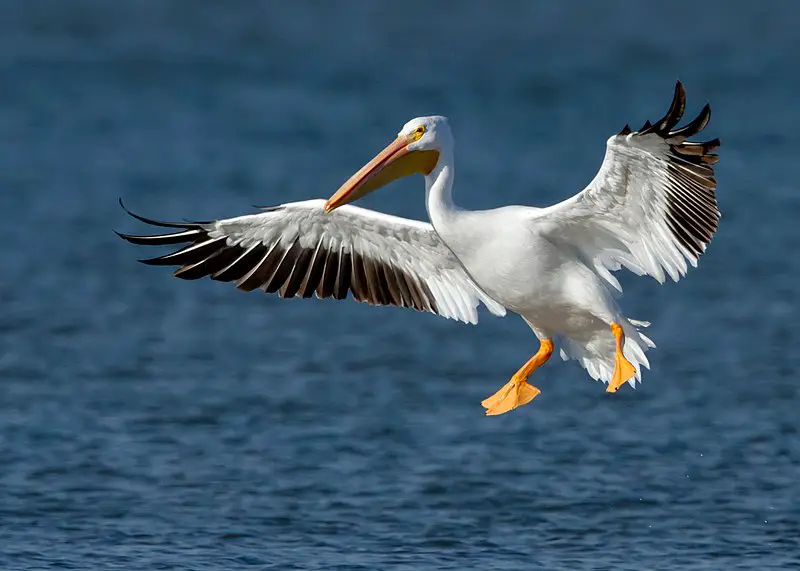
The American White Pelican is a majestic bird from the Pelecaniformes order, known for its impressive size and ability to soar gracefully in the sky.
It breeds during summer months in North America and migrates southwards towards Central and South America during winter.
The species was first described by German naturalist Johann Friedrich Gmelin back in 1789 as part of his updated version of Carl Linnaeus’ work.
This large aquatic bird has an all-white plumage with black primary flight feathers on its wings, while its beak features a characteristic yellowish colouration at the base near the face.
Its diet mainly consists of fish which it typically catches after dipping into water using its long bill; yet sometimes they can be seen stealing food items from other birds such as cormorants or gulls.Scientific classification:
| Kingdom | Animalia |
| Phylum | Chordata |
| Class | Aves |
| Order | Pelecaniformes |
| Family | Pelecanidae |
| Genus | Pelecanus |
| Species | P. erythrorhynchos |
Also Featured In: Most Popular Bird Species in North America, Birds You’ll Find in South Texas
4. Osprey
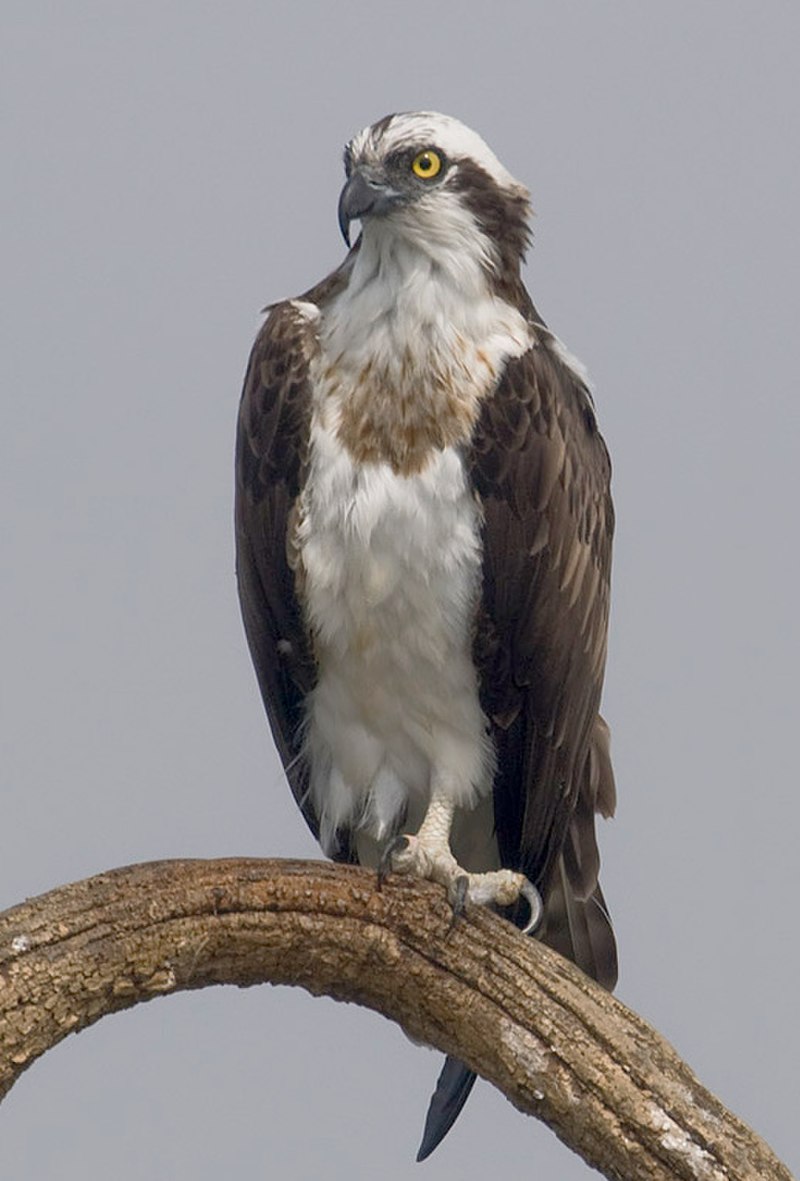
The Osprey is a majestic bird of prey with an incredibly wide habitat range. It has distinctive brown upperparts and greyish head and underparts, making it easily identifiable in the skies above many regions across the world.
With a wingspan of up to 180cm (71in) and body length reaching 60cm (24in), this large raptor specializes in hunting for fish, soaring high over rivers as well as coasts searching for its next meal.
Despite living near water sources, they can also be found inhabiting mountainsides or even woodlands, proving their incredible adaptability. An impressive species that truly deserves admiration.Scientific classification:
| Kingdom | Animalia |
| Phylum | Chordata |
| Class | Aves |
| Order | Accipitriformes |
| Family | Pandionidae |
| Genus | Pandion |
| Species | P. haliaetus |
Also Featured In: Ukrainian Birds You Should Know, Birds of Latvia
5. Herons
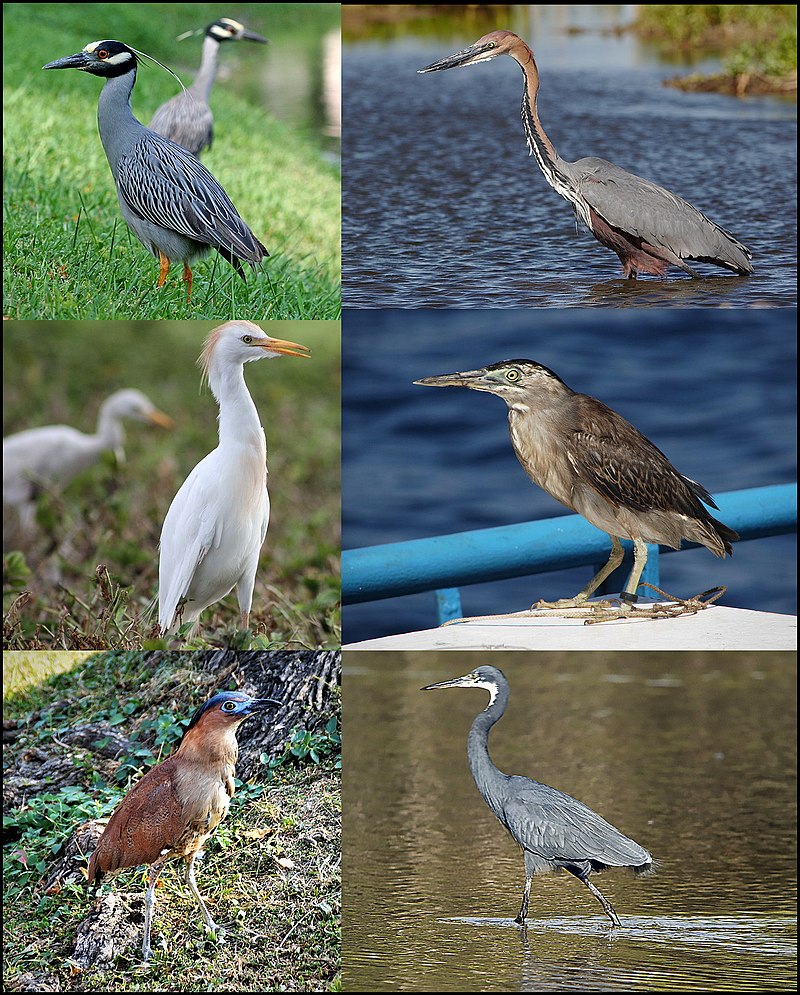
Herons are graceful and elegant birds belonging to the family Ardeidae, with 72 distinct species.
They have long legs and necks that are well-adapted for wading in shallow water like streams or ponds.
Herons can be found near freshwaters as well as along coastal areas worldwide.
Some of these species may also be referred to as egrets, bitterns or zigzag heron/bittern because they belong to certain genera such as Botaurus and Ixobrychus respectively.
These birds stand tall when searching for food by standing still in a shallow body of water while waiting patiently until prey appears before quickly capturing it with their sharp bills.Scientific classification:
| Kingdom | Animalia |
| Phylum | Chordata |
| Class | Aves |
| Order | Pelecaniformes |
| Suborder | Ardei |
| Family | Ardeidae Leach, 1820 |
Also Featured In: Most Common Types of Bangladeshi Birds, Famous Paintings Birds
6. American White Ibis
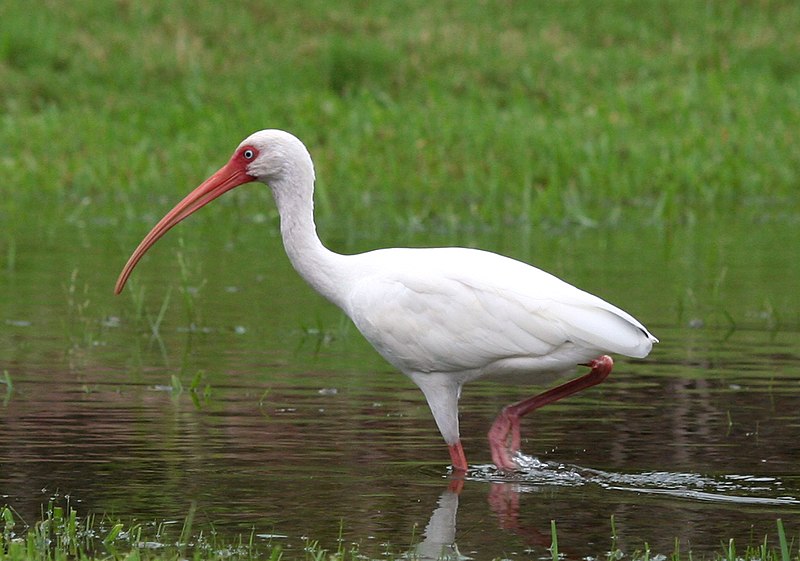
The American white ibis is a medium-sized bird with an overall white plumage and long legs. It has a bright red-orange downward curved bill, and black wing tips that are usually only visible in flight.
This species of ibis can be found from Virginia south through most of the coastal New World tropics.
They have been known to inhabit marshes, swamps, ponds, lakeshores as well as mangrove forests near water sources where they feed on crustaceans such as crabs and shrimp among other aquatic animals like insects or snails.
The American white ibis plays an important role in its ecosystem by helping to control insect populations which helps maintain balance within these environments.Scientific classification:
| Kingdom | Animalia |
| Phylum | Chordata |
| Class | Aves |
| Order | Pelecaniformes |
| Family | Threskiornithidae |
| Genus | Eudocimus |
| Species | E. albus |
Also Featured In: Top Birds Found in Mexico, Everglades Birds
7. Little Blue Heron
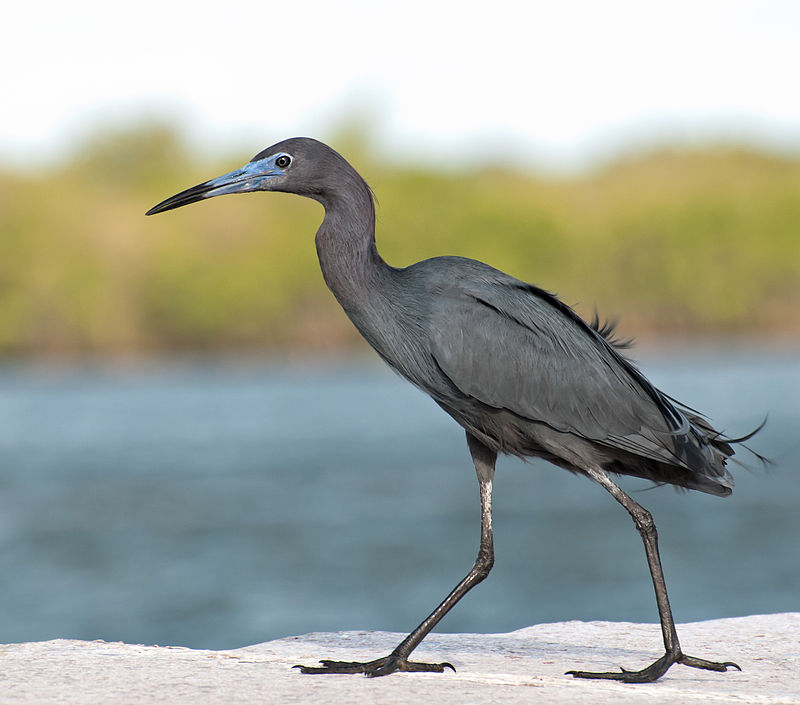
The Little Blue Heron is a small, darkly-colored heron with two-toned bill. Juveniles are completely white, similar to the Snowy Egret. In breeding season, adults develop unique coloration on their head and legs.
The bird has an expansive habitat range that covers much of the Americas from North America all the way down to South America.
They feed mostly in shallow water areas like tidal flats or marshes and eat small aquatic animals such as fish, frogs and crustaceans.
This species can also be found along coastal regions where they gather at night for roosting purposes during winter months when food sources become more scarce due to migration patterns of its prey animals.
These birds have adapted well over time allowing them to persist in most habitats throughout their wide range even despite environmental changes caused by human activities such as pollution or development projects near wetlands ecosystems which are essential for this species’ survival.Scientific classification:
| Kingdom | Animalia |
| Phylum | Chordata |
| Class | Aves |
| Order | Pelecaniformes |
| Family | Ardeidae |
| Genus | Egretta |
| Species | E. caerulea |
Also Featured In: Blue Birds You’ll Found around Us, Birds that Live around Central Florida
8. Great Egret

The Great Egret is a large, white bird found in many regions of the world. It has four subspecies that reside across Asia, Africa, Americas and southern Europe.
This species usually lives near bodies of water such as lakes and marshes. They are also now starting to spread into more northern areas of Europe due to climate change.
These birds have long yellow legs with an impressive wingspan for their size which allows them to soar majestically through the sky hunting for fish or amphibians in shallow waters below.
Their feathers have been used historically by Native Americans as part of traditional garments or ceremonies but this practice should be avoided today so these amazing creatures can thrive without harm from humans.Scientific classification:
| Kingdom | Animalia |
| Phylum | Chordata |
| Class | Aves |
| Order | Pelecaniformes |
| Family | Ardeidae |
| Genus | Ardea |
| Species | A. alba |
Also Featured In: Most common Birds in France, Most Common Romanian Birds
9. Great Blue Heron

The Great Blue Heron is a majestic wading bird found in many parts of North America, Central America, the Caribbean and even as far away as the Galapagos Islands.
It has an impressive wingspan which can reach up to six feet wide. Its feathers are mainly bluish-gray with brownish streaks on both its neck and chest while its head displays white plumes.
The adult herons can also be identified by their yellow bill and legs.
They live near bodies of water such as lakes, marshes or rivers where they feed on fish using a spear like motion with their sharp bills.
An all-white population exists only in south Florida and the Florida Keys making it quite unique.Scientific classification:
| Kingdom | Animalia |
| Phylum | Chordata |
| Class | Aves |
| Order | Pelecaniformes |
| Family | Ardeidae |
| Genus | Ardea |
| Species | A. herodias |
Also Featured In: Common Birds in Canada, Birds Commonly Found in New York
10. Black Skimmer
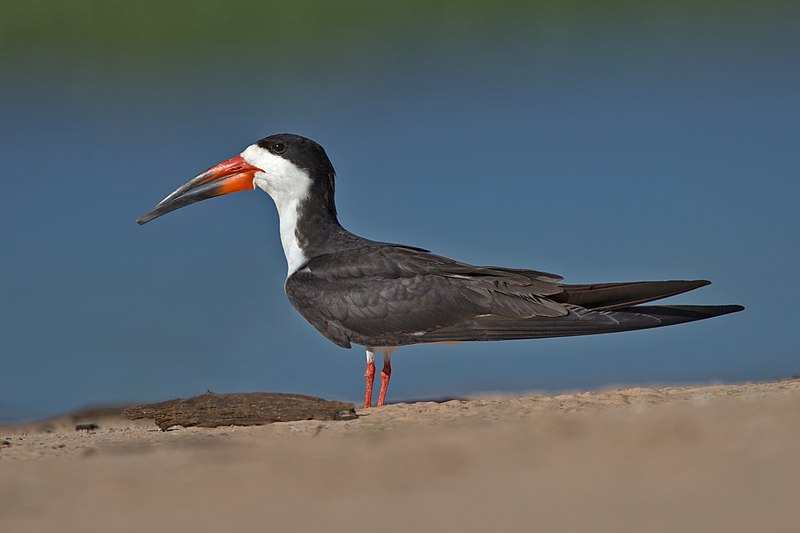
The Black Skimmer is a seabird which belongs to the skimmer genus Rynchops and Laridae family.
It breeds in North and South America, while Northern populations migrate south for winter towards warmer climates such as the Caribbean or Pacific coasts.
The Southern American races have adapted to annual floods by making shorter migrations during this time.
These birds are easily identified with their unique long red bill that has an upper mandible longer than its lower mandible.
They feed mainly on small fish caught at night when they skim across shallow water using their beak like a knife cutting through waves of water.
Their dark grey back contrasts against white belly feathers creating beautiful patterns in flight, aiding them in catching prey easier due to its camoflauge effect above and below waters surface.Scientific classification:
| Kingdom | Animalia |
| Phylum | Chordata |
| Class | Aves |
| Order | Charadriiformes |
| Family | Laridae |
| Genus | Rynchops |
| Species | R. niger |
Also Featured In: Most Unique Birds in Peru, Birds Live Near San Diego
11. Red-Tailed Hawk
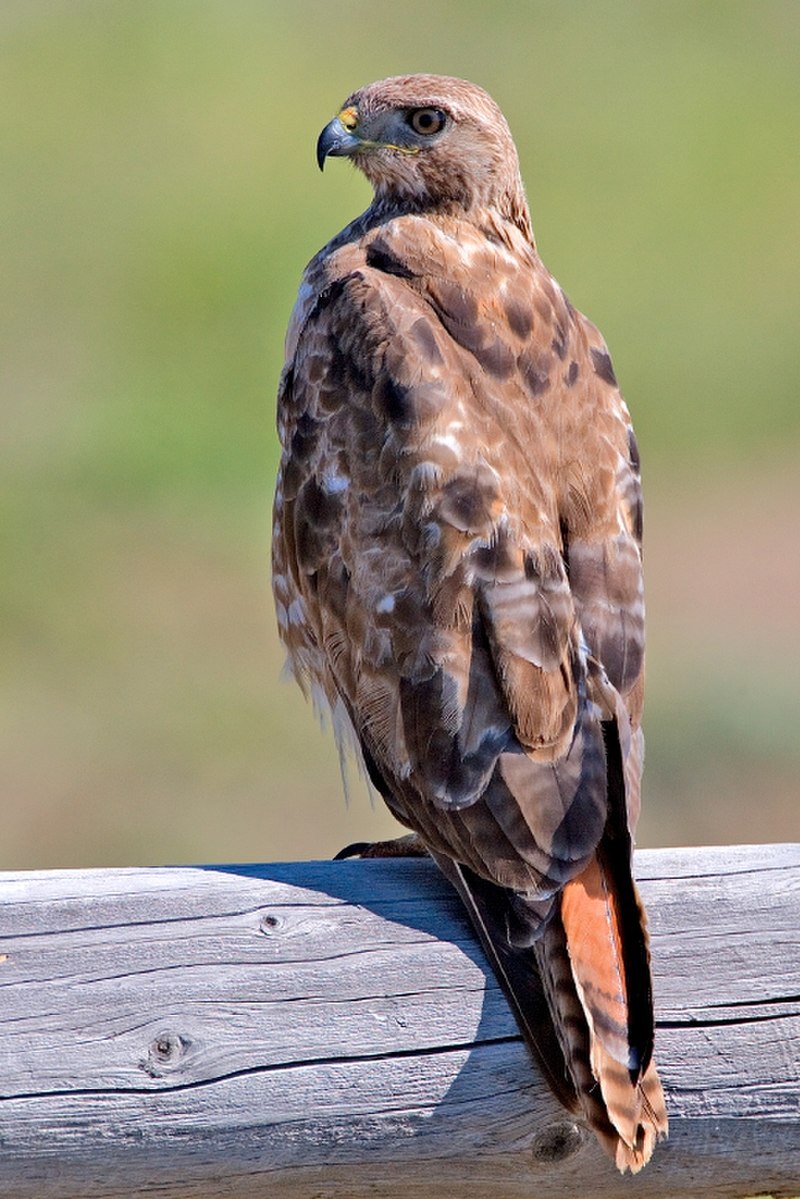
The Red-tailed Hawk is a majestic bird of prey with its distinctive red tail. It can be found throughout North America, from Alaska in the north to Panama and the West Indies in the south.
This species belongs to Buteo genus, which makes it one of most common raptors on earth.
These hawks mainly hunt small mammals such as rabbits or squirrels but also feed on reptiles and birds during migration season.
Unlike other predator birds, they prefer open areas for hunting like fields or grasslands rather than dense forests.
They build their nests high up on trees where they stay all year long unless disturbed by humans or animals nearby.
Their presence has become an iconic part of American culture due to their frequent sightings around homes and parks alike making them beloved creatures among people everywhere.Scientific classification:
| Kingdom | Animalia |
| Phylum | Chordata |
| Class | Aves |
| Order | Accipitriformes |
| Family | Accipitridae |
| Genus | Buteo |
| Species | B. jamaicensis |
Also Featured In: Dominican Republic birds, New Hampshire Birds You Should Know
12. Roseate Spoonbill
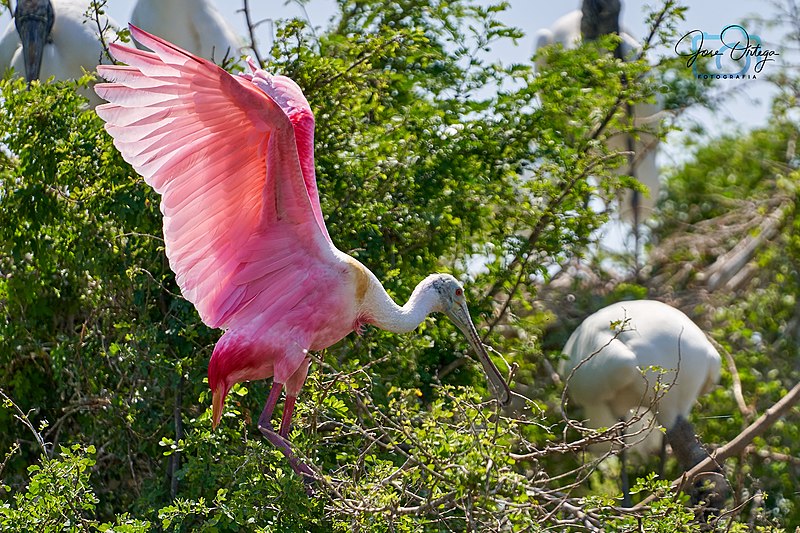
The Roseate Spoonbill is a beautiful and majestic bird found in both North and South America.
It belongs to the ibis family, Threskiornithidae, and its vibrant pink colour comes from canthaxanthin pigment derived from their diet of crustaceans like shrimp.
Sadly plume hunting has almost driven this species close to extinction during the 18th and 19th centuries but fortunately it’s making a comeback due to conservation efforts made by dedicated wildlife organisations.
Its large spoon-like bill helps them filter out food sources such as small fish or frogs from shallow water areas while they wade through mudflats with their long legs looking for something tasty.
With its unique appearance, graceful wingspan amd impressive flight capabilities, the Roseate Spoonbill is an incredibly photogenic animal that will captivate any viewers attention who happen to be lucky enough witness it in all its glory.Scientific classification:
| Kingdom | Animalia |
| Phylum | Chordata |
| Class | Aves |
| Order | Pelecaniformes |
| Family | Threskiornithidae |
| Genus | Platalea |
| Species | P. ajaja |
Also Featured In: Costa Rica Birds, Swamps Birds You Should Know
13. Snowy Egret
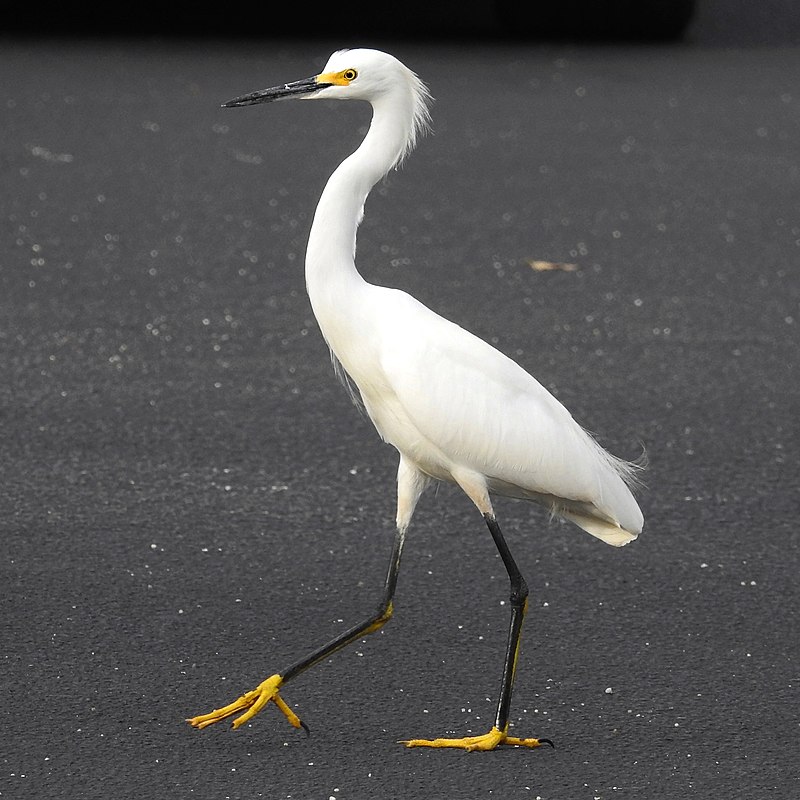
The Snowy Egret is a small white heron native to North America. Its scientific name, Egretta thula, comes from Provençal French for the little egret and an incorrect reference to the Black-necked Swan by Chilean naturalist Juan Ignacio Molina in 1782.
This beautiful bird has black legs with yellow feet, and a long plume of feathers on its head that often appears as if it’s wearing a crown.
It feeds primarily on insects and aquatic life like fish or frogs making it well adapted for both wetland habitats such as marshes or swamps plus coastal areas close to shorelines.
With their graceful movements they are truly delightful creatures to observe while out exploring nature.Scientific classification:
| Kingdom | Animalia |
| Phylum | Chordata |
| Class | Aves |
| Order | Pelecaniformes |
| Family | Ardeidae |
| Genus | Egretta |
| Species | E. thula |
Also Featured In: Trinidad and Tobago birds, Most Common Lake Birds
14. Clapper Rail
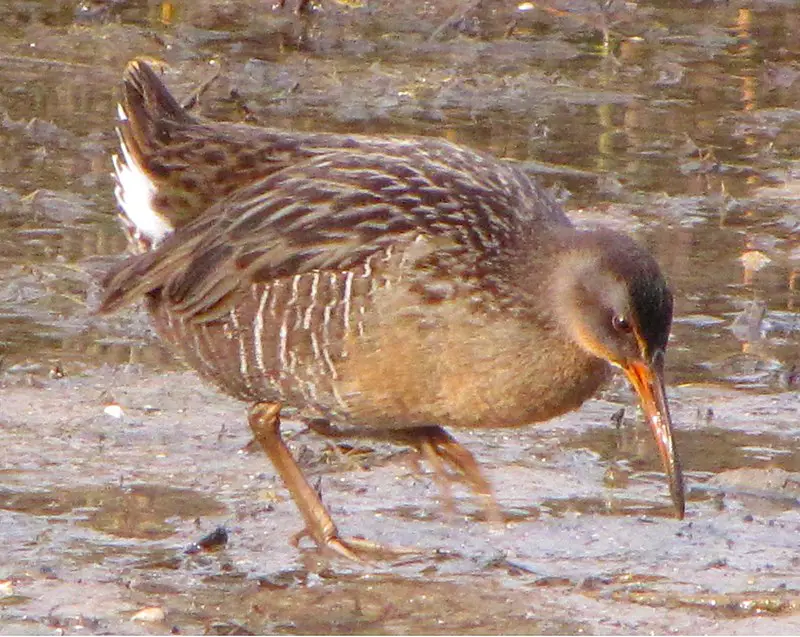
The Clapper Rail is a large, brown bird that belongs to the Rallidae family. It is found in wetlands along the eastern coast of America, Mexico and some Caribbean Islands.
This species was once considered to be related to Mangrove Rails but recent taxonomic studies have shown otherwise.
They are quite vocal with their loud calls which sound like someone clapping two stones together hence its name ‘Clapper’.
These birds feed on small crabs, fishes and insects in coastal marshes and swamps making them an important part of wetland ecosystems.
In order for these birds to thrive actions should be taken by governments such as restoring habitats or creating new ones so they can carry out their activities without any disturbance from humans or predators.Scientific classification:
| Kingdom | Animalia |
| Phylum | Chordata |
| Class | Aves |
| Order | Gruiformes |
| Family | Rallidae |
| Genus | Rallus |
| Species | R. crepitans |
Also Featured In: Saint Kitts & Nevis birds, Long Island Birds You Should Know
15. Least Tern
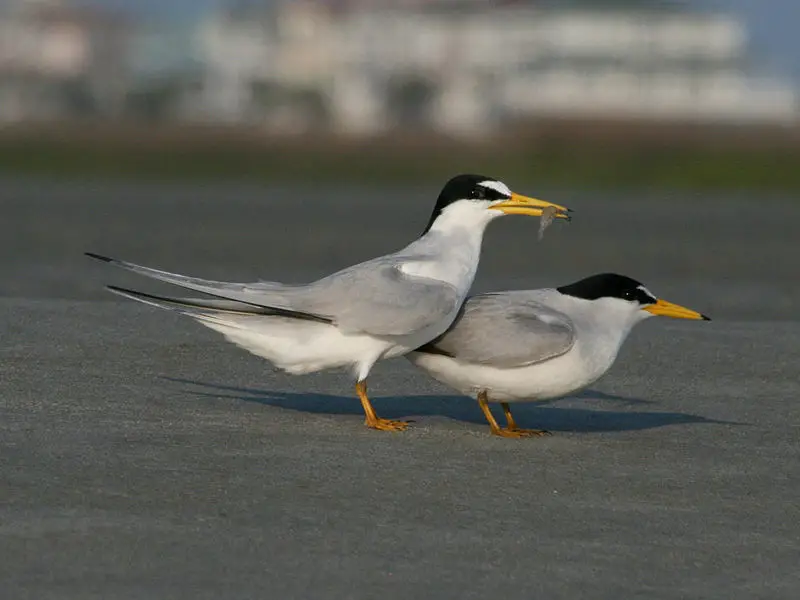
The Least Tern is a species of tern native to North America and northern South America. It has many close relatives, such as the yellow-billed tern and Peruvian tern from South America, or the little tern from the Old World.
The bird measures 8.7 – 9.4 inches in length with a wingspan of 16–18 inches acrosss, making it an intermediate size between most other species of birds within its family groupings.
Its feathers are usually gray on top with white underneath and typically have darker accents near their heads along with bright red bills for feeding during summer months when they mate upon beaches found throughout these regions mentioned above.
They feed mainly on small fish that live at shallow depths near shorelines where they also nest nearby due to migratory patterns which take place annually each year.
Hence why this particular bird does not travel far distances away from areas known as home for them over long periods of time like some other types do.Scientific classification:
| Kingdom | Animalia |
| Phylum | Chordata |
| Class | Aves |
| Order | Charadriiformes |
| Family | Laridae |
| Genus | Sternula |
| Species | S. antillarum |
Also Featured In: Aruba birds, Most Common Birds in South America Birds
16. Yellow-Crowned Night Heron
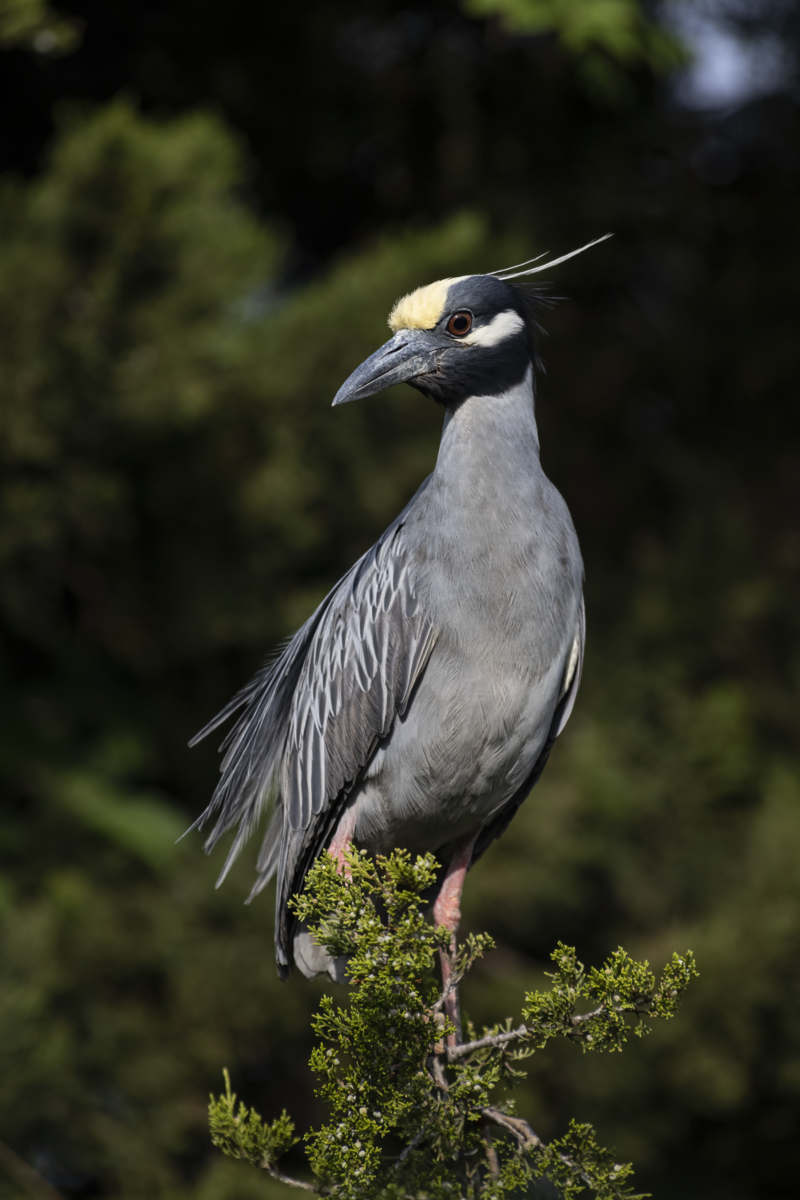
The Yellow-crowned night heron is a beautiful and unique species of bird native to the Americas. It has distinctive yellow crowns on its head, making it easy to identify among other herons.
These birds are also larger than most other types of herons, reaching up to 70 cm in length and 850 g in weight.
They usually feed on small fish or crustaceans while wading through shallow waters with their long legs.
The yellow-crowned night heron can be found near marshes or lakes during breeding season when they will build nests made from twigs high above the ground for protection against predators like raccoons and foxes.
This majestic bird is an important part of wetland ecosystems as it helps keep populations of smaller aquatic animals balanced by preying upon them.Scientific classification:
| Kingdom | Animalia |
| Phylum | Chordata |
| Class | Aves |
| Order | Pelecaniformes |
| Family | Ardeidae |
| Genus | Nyctanassa |
| Species | N. violacea |
Also Featured In: Bermuda birds, Common Central Park Birds
17. Double-Crested Cormorant

The double-crested cormorant is a majestic bird with an impressive wingspan, found across North America from the Aleutian Islands all the way down to Mexico.
Its black plumage stands out against its bright orange-yellow facial skin and some extended patches of white feathers on each side of its throat.
It measures between 28 – 35 inches in length and has webbed feet that enable it to swim gracefully through rivers and lakes, as well as coastal areas.
These birds are known for their voracious appetite for fish, sometimes diving over 100 ft deep into water looking for food.
Despite this reputation they also feed on crustaceans, amphibians and insects when available.
Cormorants have been part of many cultures throughout history due to their remarkable ability to fly long distances making them valued messengers or companions during fishing expeditions at sea.Scientific classification:
| Kingdom | Animalia |
| Phylum | Chordata |
| Class | Aves |
| Order | Suliformes |
| Family | Phalacrocoracidae |
| Genus | Nannopterum |
| Species | N. auritum |
Also Featured In: Cormorant Species, Water Birds Live around Us
18. Purple Martin
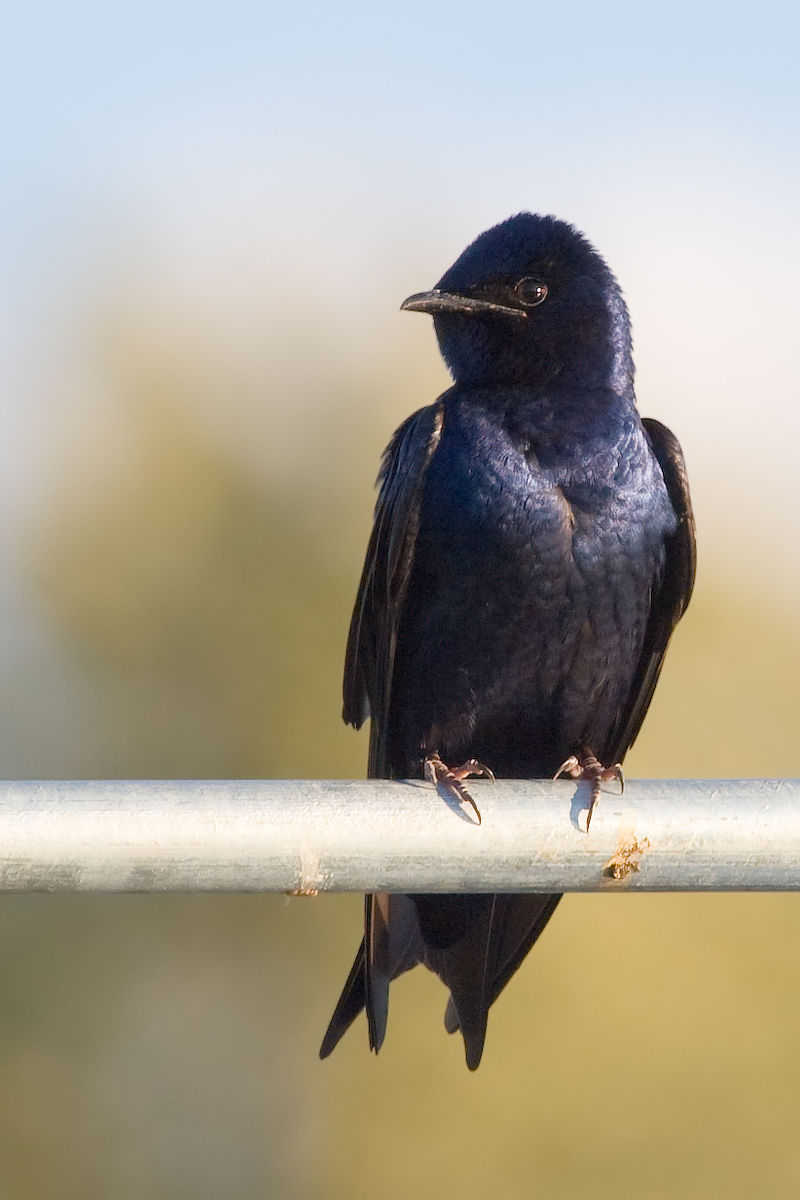
The Purple Martin is a beautiful passerine bird in the swallow family, and is the largest of its kind in North America.
It has dark blackish-blue feathers that have an iridescent sheen which can make them appear blue or deep purple depending on the light; they may even look green.
These birds are quite social creatures and often build communal roosts with multiple nests, having as many as hundreds of individuals living together at once.
They feed mainly on flying insects such as flies, moths, wasps and bees.
Their habitats include areas near bodies of water like lakes or rivers where there’s plenty for these birds to eat all year round.
The Purple Martin is truly an amazing species worth protecting.Scientific classification:
| Kingdom | Animalia |
| Phylum | Chordata |
| Class | Aves |
| Order | Passeriformes |
| Family | Hirundinidae |
| Genus | Progne |
| Species | P. subis |
Also Featured In: Swallows Species, Birds That Live in Colorado
19. Common Yellowthroat

The Common Yellowthroat is a small, New World Warbler found throughout North America. It has distinctive yellow and black plumage that earned it the nickname “Yellow Bandit” in the Midwest United States.
This species is highly adaptable and can be found inhabiting wetlands, grasslands, shrub-land habitats, as well as suburban areas.
The genus of this bird’s scientific name translates to mean ‘ground’ and ‘small bird’, which are fitting characteristics for such an elusive yet common little creature.
Its diet consists predominantly of insects but may also include other invertebrates like spiders or worms.
Overall the Common Yellowthroat makes an excellent addition to any backyard with its cheerful song.Scientific classification:
| Kingdom | Animalia |
| Phylum | Chordata |
| Class | Aves |
| Order | Passeriformes |
| Family | Parulidae |
| Genus | Geothlypis |
| Species | G. trichas |
Also Featured In: Nebraska Birds, Most Common Songs Birds that Live around You
20. Summer Tanager
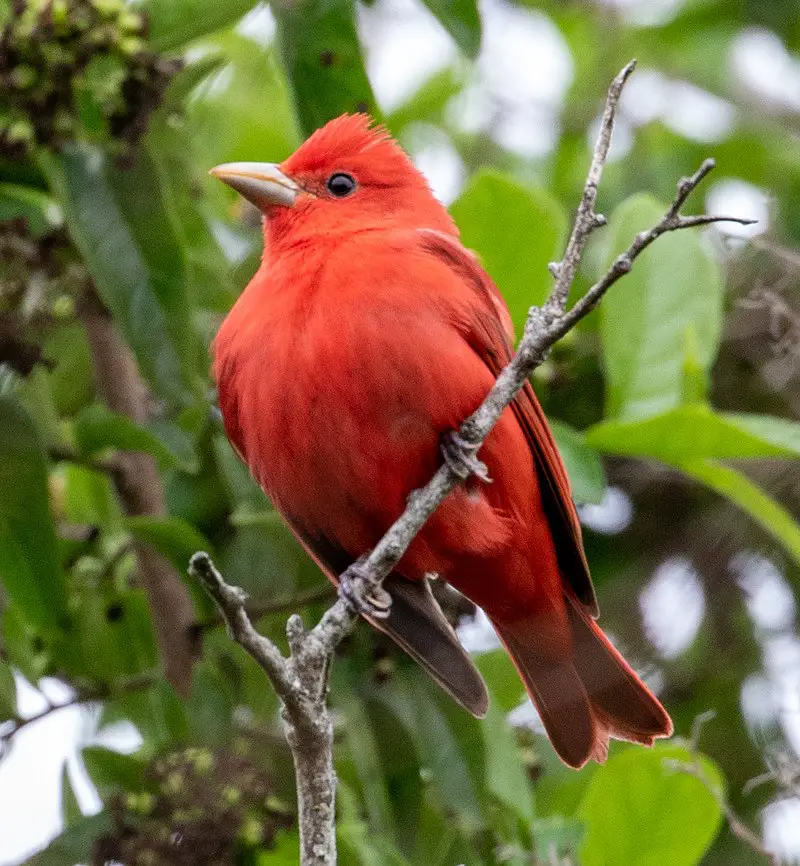
The Summer Tanager is a stunningly beautiful member of the cardinal family. Native to North and South America, this medium-sized songbird features striking red plumage on its back with yellow underparts.
It has a pointed black bill and long tail feathers that can be seen fluttering through the air when it flies.
The species’ vocalizations are quite similar to those of other members of its genus as well, which often include short whistles and chirps in addition to longer songs made up of various phrases or syllables.
With their vibrant colors and melodic voices, these birds make an eye-catching sight any time they appear.Scientific classification:
| Kingdom | Animalia |
| Phylum | Chordata |
| Class | Aves |
| Order | Passeriformes |
| Family | Cardinalidae |
| Genus | Piranga |
| Species | P. rubra |
Also Featured In: birds of Arkansas, Birds Live in Arkansas
21. Brown Pelican

The majestic brown pelican is a dive-feeding bird that belongs to the pelican family. It is one of the three pelican species found in the Americas and is known to dive into water to catch its prey.
From the Atlantic Coast of New Jersey to the mouth of the Amazon River, and along the Pacific Coast from British Columbia to northern Chile, including the Galapagos Islands, this bird can be found.
Its scientific name is Pelecanus occidentalis, and it has a colored brown plumage, which is its distinct characteristic.
The brown pelican belongs to the largest bird species that exist today, with a wingspan that can stretch up to seven feet long.
This bird helps maintain a balance in the ecosystem by eating smaller fish, crustaceans, and other aquatic prey.Scientific classification:
| Kingdom | Animalia |
| Phylum | Chordata |
| Class | Aves |
| Order | Pelecaniformes |
| Family | Pelecanidae |
| Genus | Pelecanus |
| Species | P. occidentalis |
Also Featured In: Birds You’ll Find in the Sea, Flight Birds You Should Know
22. Tricolored Heron
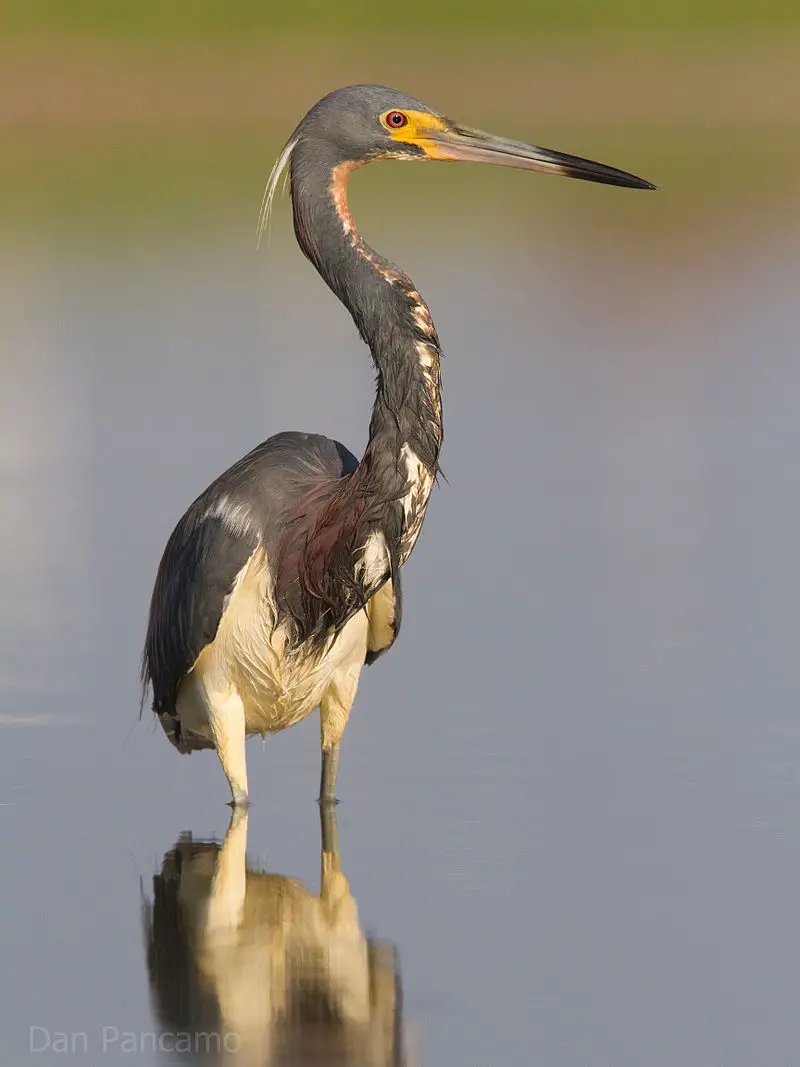
The Tricolored heron, also known as Egretta tricolor, is a species of heron found in coastal areas of the Americas. Unlike other types of herons, the Tricolored heron is more solitary and primarily feeds on small fish.
These birds usually breed in swamps and coastal habitats and tend to build their nests in colonies along with other herons. They typically build their nests on platforms.Scientific classification:
| Kingdom | Animalia |
| Phylum | Chordata |
| Class | Aves |
| Order | Pelecaniformes |
| Family | Ardeidae |
| Genus | Egretta |
| Species | E. tricolor |
Also Featured In: Birds that can be Seen in Outer Banks, Blue Birds that You’ll Find in Utah
23. American Oystercatcher
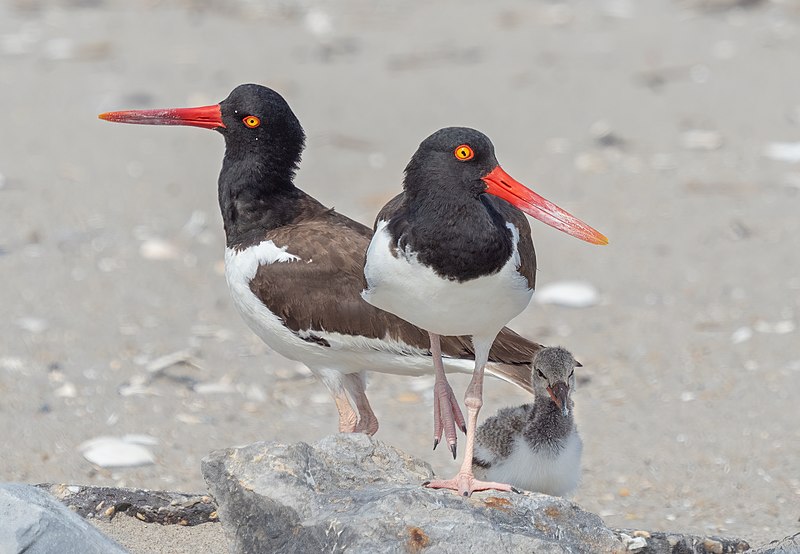
The American oystercatcher, a member of the Haematopodidae family, is known for feeding on oysters. They were originally named the “sea pie” but were renamed in 1731 by naturalist Mark Catesby.
There are currently an estimated 43,000 American oystercatchers living in the wild. They are also referred to as the American pied oystercatcher or PiruPiru. With around 1,500 breeding pairs, these birds are considered a threatened species.
Known for their distinctive black and white plumage, American oystercatchers are often seen along the coastlines of North and South America.Scientific classification:
| Kingdom | Animalia |
| Phylum | Chordata |
| Class | Aves |
| Order | Charadriiformes |
| Family | Haematopodidae |
| Genus | Haematopus |
| Species | H. palliatus |
Also Featured In: Common Birds Found near Robert Island, Birds That Live around Grand Turk Island
24. Egret
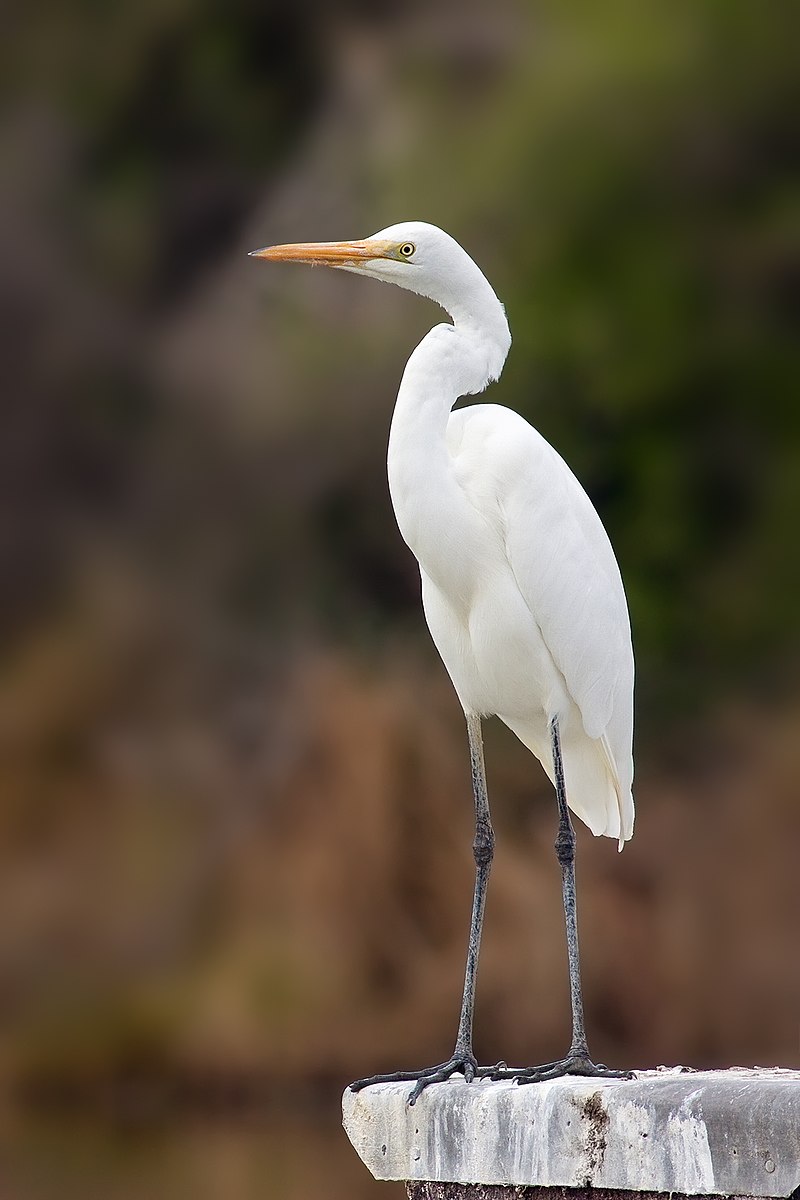
Egrets are wading birds that share the same build as herons, making them indistinguishable biologically. They are known for their long legs and white or buff plumage.
During the breeding season, egrets develop fine plumes, usually milky white in color. Many members of the Egretta or Ardea genera are classified as egrets or herons.
Egrets are typically known for their graceful movements and their ability to wade into shallow water to fish.
They are commonly found near bodies of water such as lakes, rivers, and marshes. Egrets are a symbol of purity and elegance and are often depicted in art as a result.
Overall, the egret is a fascinating bird that is both beautiful and functional in its environment.Scientific classification:
| Kingdom | Animalia |
| Phylum | Chordata |
| Class | Aves |
| Order | Pelecaniformes |
| Family | Ardeidae |
| Subfamily | Ardeinae |
Also Featured In: Birds That Live In Captiva Island, Birds That Live In Gasparilla Island